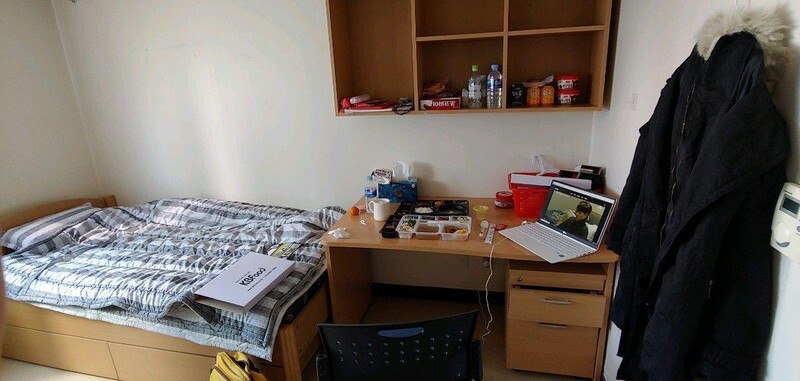hankyoreh
Links to other country sites 다른 나라 사이트 링크
[Interview] A glimpse into life in quarantine with the novel coronavirus
When Lim Ga-yeong, 30, (pseudonym) returned to her house in the Dalseong County of Daegu after work on Mar. 2, her 58-year-old mother had some disturbing news for her. “The test came back positive.”
Lim’s mother typically catches colds when seasons change, and she stayed calm as she told her family she’d contracted COVID-19.

“That was when the news reports were saying that even people without underlying conditions had died of the disease. We were really worried at first, since my mother is getting up there in age and has dealt with respiratory issues,” Ga-yeong said.
Over the next three weeks, the entire family had to deal with the virus. Ga-yeong tested positive just three days after her mother. And while her father and younger sibling didn’t catch it, they had to self-quarantine. Ga-yeong’s mother was released from quarantine on Mar. 16 and Ga-yeong on Mar. 19.
Ga-yeong’s relief was palpable during her telephone interview with the Hankyoreh on Mar. 23. “I stayed in the quarantine facility for longer than I’d expected, and it was so boring. I was really nervous my final test would come back positive,” she said.
According to South Korea’s Centers for Disease Control and Prevention (KCDC), the country’s total number of confirmed COVID-19 cases stands at 9,037 as of Mar. 24, and 3,507 people have been released from quarantine.

Ga-yeong’s family had its rendezvous with COVID-19 at the end of February. Her mother, a Buddhist and member of her local temple’s choir, had attended a gathering at the temple on Feb. 18, and several people there ended up testing positive. Ga-yeong and her family think their cases originated with a member of the Shincheonji religious sect who works with a choir member who also got infected.
Following the meeting, Ga-yeong’s mother started feeling soreness in her muscles and body aches. When her mother paid her first visit to a doctor in her neighborhood on Mar. 24, the doctor thought the flu was more likely than COVID-19. The medicine she was prescribed dealt with the aches, but she soon had other symptoms — a dry cough and no sense of smell. After one of the other choir members suggested she get tested for COVID-19, she visited a screening clinic on Mar. 1. On the day that Ga-yeong’s mother got the bad news, Mar. 2, there were more than 500 new cases in Daegu alone.
Because the explosion of new cases created a shortage of hospital beds, Ga-yeong’s mother had to stay at home until hospital space opened up, and the rest of the family had to wait for instructions from the public health authorities. Two days later, Ga-yeong visited a screening center herself. While she didn’t have any noticeable symptoms, she’d lost her sense of smell for a few days, just like her mother. This was on an entirely different level from her frequent run-ins with rhinitis. While her father and sibling fortunately tested negative, Ga-yeong’s test came back positive on Mar. 5.
After hearing that Ga-yeong was infected, her mother berated herself for going to the temple that day. Ga-yeong tried to comfort her mother, and in turn received messages of support from her coworkers. It’s not your fault, they told her — a simple thing to say, but still very encouraging.
Even after testing positive, neither Ga-yeong nor her mother felt very sick. “Before I was diagnosed, my sense of smell had gotten noticeably worse, but after the diagnosis, I hardly felt any symptoms,” Ga-yeong said. She suspected she was one of those cases of asymptomatic infection she’d seen on the news. Her mother’s symptoms were somewhat worse: her dry cough continued after her diagnosis, and she sometimes felt chills and body aches.
Self-quarantine felt like four families living under one roofGa-yeong’s mother was transported to Daegu’s second residential treatment center, in a dormitory at Kyungpook National University, on Mar. 8, and Ga-yeong was sent to the same place on Mar. 11. But until then, the house was a veritable minefield. The four family members — Ga-yeong, her mother, and her uninfected father and sibling — had to all remain at home, quarantined separately.
“My father stayed in the living room, and my mother, my sibling, and I all stayed in our own rooms. We all prepared meals separately and ate at different times, so we ended up eating a lot of frozen food,” Ga-yeong said. Throughout their time in self-quarantine, all four of them kept their eyes glued to news about COVID-19.
Even though Ga-yeong and her mother were staying at the same residential treatment center, they didn’t see each other even once. They could only talk over the phone. Ga-yeong spent most of her time coloring in a coloring book in an attempt to stay calm and occasionally dealt with work from the office. What kept her strong over the long wait were daily visits by the doctor. Also memorable were the meals she was served — typical Korean home cooking, a bowl of rice and eight side dishes, including vegetables.
“Rather than being afraid of getting infected, I think we should focus on staying sharp and following hygiene rules. And even when people get infected, I hope they won’t lose heart,” Ga-yeong said after returning home on Mar. 19.
Ga-yeong and her mother were given a clean bill of health after testing negative in two real-time DNA amplifier tests (using the reverse transcription polymerase chain reaction), but her father and sibling are still in self-quarantine. Their quarantine period lasts for two weeks after Ga-yeong was transferred to the residential treatment center.
By Park Jun-yong, staff reporter
Please direct comments or questions to [english@hani.co.kr]

Editorial・opinion
![[Column] Life on our Trisolaris [Column] Life on our Trisolaris](https://flexible.img.hani.co.kr/flexible/normal/500/300/imgdb/original/2024/0505/4817148682278544.jpg) [Column] Life on our Trisolaris
[Column] Life on our Trisolaris![[Editorial] Penalties for airing allegations against Korea’s first lady endanger free press [Editorial] Penalties for airing allegations against Korea’s first lady endanger free press](https://flexible.img.hani.co.kr/flexible/normal/500/300/imgdb/original/2024/0502/1817146398095106.jpg) [Editorial] Penalties for airing allegations against Korea’s first lady endanger free press
[Editorial] Penalties for airing allegations against Korea’s first lady endanger free press- [Editorial] Yoon must halt procurement of SM-3 interceptor missiles
- [Guest essay] Maybe Korea’s rapid population decline is an opportunity, not a crisis
- [Column] Can Yoon steer diplomacy with Russia, China back on track?
- [Column] Season 2 of special prosecutor probe may be coming to Korea soon
- [Column] Park Geun-hye déjà vu in Yoon Suk-yeol
- [Editorial] New weight of N. Korea’s nuclear threats makes dialogue all the more urgent
- [Guest essay] The real reason Korea’s new right wants to dub Rhee a founding father
- [Column] ‘Choson’: Is it time we start referring to N. Korea in its own terms?
Most viewed articles
- 160% of young Koreans see no need to have kids after marriage
- 2[Reporter’s notebook] In Min’s world, she’s the artist — and NewJeans is her art
- 3[Column] Life on our Trisolaris
- 4Hybe-Ador dispute shines light on pervasive issues behind K-pop’s tidy facade
- 5Months and months of overdue wages are pushing migrant workers in Korea into debt
- 6[Editorial] Penalties for airing allegations against Korea’s first lady endanger free press
- 7Presidential office warns of veto in response to opposition passing special counsel probe act
- 8Japan says it’s not pressuring Naver to sell Line, but Korean insiders say otherwise
- 9S. Korea discusses participation in defense development with AUKUS alliance
- 10[Column] “Hoesik” as ritual of hierarchical obedience